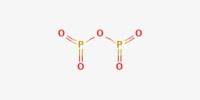Lancaster University engineers have conducted research that has discovered a means to manufacture sustainable biofuel additives using radiation obtained from nuclear waste. Because the renewable percentage of gasoline is expected to rise to 20% in the future years, finding a new manufacturing channel for these additives might aid in the fight to reduce carbon dioxide emissions and combat climate change.
Engineers propose a nuclear biorefinery to generate one such additive, solketal, using waste from both the biochemical and nuclear industries in the research paper ‘Nuclear-driven production of renewable fuel additives from waste organics’, which was published in the science journal Communications Chemistry.
Fuel additives obtained this way might assist meet net-zero carbon emission objectives, with a renewable percentage of petroleum-derived fuels scheduled to rise from 5% to 20% by 2030.
Arran Plant
Lancaster University Ph.D. researcher Arran Plant said: “This research presents a new advance that utilizes radiation that could, in the future, be derived from nuclear waste to produce renewable biofuel additives from biodiesel waste, which could then be used in modern petroleum fuel blends. Fuel additives obtained this way might assist meet net-zero carbon emission objectives, with a renewable percentage of petroleum-derived fuels scheduled to rise from 5% to 20% by 2030.”
Malcolm Joyce, Professor of Nuclear Engineering at Lancaster University, said: “Co-generation with nuclear energy is an important area of current research, for example, using heat alongside the production of electricity. We set out to determine whether radiation might also present a similar possibility, and discovered that it can: in this case yielding a low-carbon fuel additive.”
Dr Vesna Najdanovic, an expert in biofuels from Aston University, and previously at Lancaster University, said: “I am so excited about our work as it reveals a new method for processing wastes from biodiesel industry using spent nuclear energy. This green technology will pave the pathway to use waste as a resource to produce valuable chemicals and biofuels.”
Many plans to minimize carbon emissions rely on reliable, low-carbon energy from nuclear or biofuels, but nuclear reactors have significant upfront costs, and biodiesel production creates waste glycerol, which has few secondary applications.
Combining technology to generate raw materials from waste glycerol using ionizing radiation might help to diversify nuclear energy usage while also repurposing biodiesel waste.
Researchers have found that residual energy from used nuclear fuel may be used to create a radiation-induced catalyst with a limited lifetime. This catalyst aids in the production of both solketal and acetol in a reaction. Once completely set up, this method eliminates the need for expensive and energy-intensive processes like pH changes, high temperatures, high pressures, or extra catalytic reagents, with low continuing radiation-processing costs.
Solketal is a new gasoline additive that raises octane values while minimizing gum formation, eliminating knocking and engine efficiency losses while also cutting particle emissions. Meanwhile, acetol may be used to make other important compounds like propylene glycol and furan derivatives, as well as as a coloring agent in the textile industry.
Based on the scalability of this process to current nuclear facilities in Europe (such as spent fuel pools or modern Pressurized Water Reactors), researchers estimate that nuclear co-production may yield 104 tonnes of solketal per year. This would result in considerable amounts of viable fuel mix being produced each year.
Short chain oxygenates can be used as fuel additives to replace a portion of a hydrocarbon fuel while improving certain of the fuel’s qualities. Blending the generated bio-oils with a variety of fuels was used to test their usefulness. Guaiacol, a possible antioxidant, was discovered to be totally miscible with low-sulphur petrol (ULSP), diesel, aviation kerosene, and rapeseed methyl ester during short reaction periods.
By 2030, the renewable share of commercial petroleum blends is expected to rise from 5% to 20% v/v, and E10 petrol will be accepted as the standard grade in the UK, according to recent announcements. In this scenario, nuclear-powered, biomass-derived solketal might help achieve net-zero emissions goals by combining low-carbon co-generation with co-production.
Lancaster scholars Arran Plant and Professor Malcolm Joyce, as well as Dr Vesna Najdanovic of Aston University and specialists from the Joef Stefan Institute Reactor Physics Department in Slovenia, collaborated on the study. Lancaster University, the Engineering and Physical Sciences Research Council, and the Royal Society all contributed to the project.
















